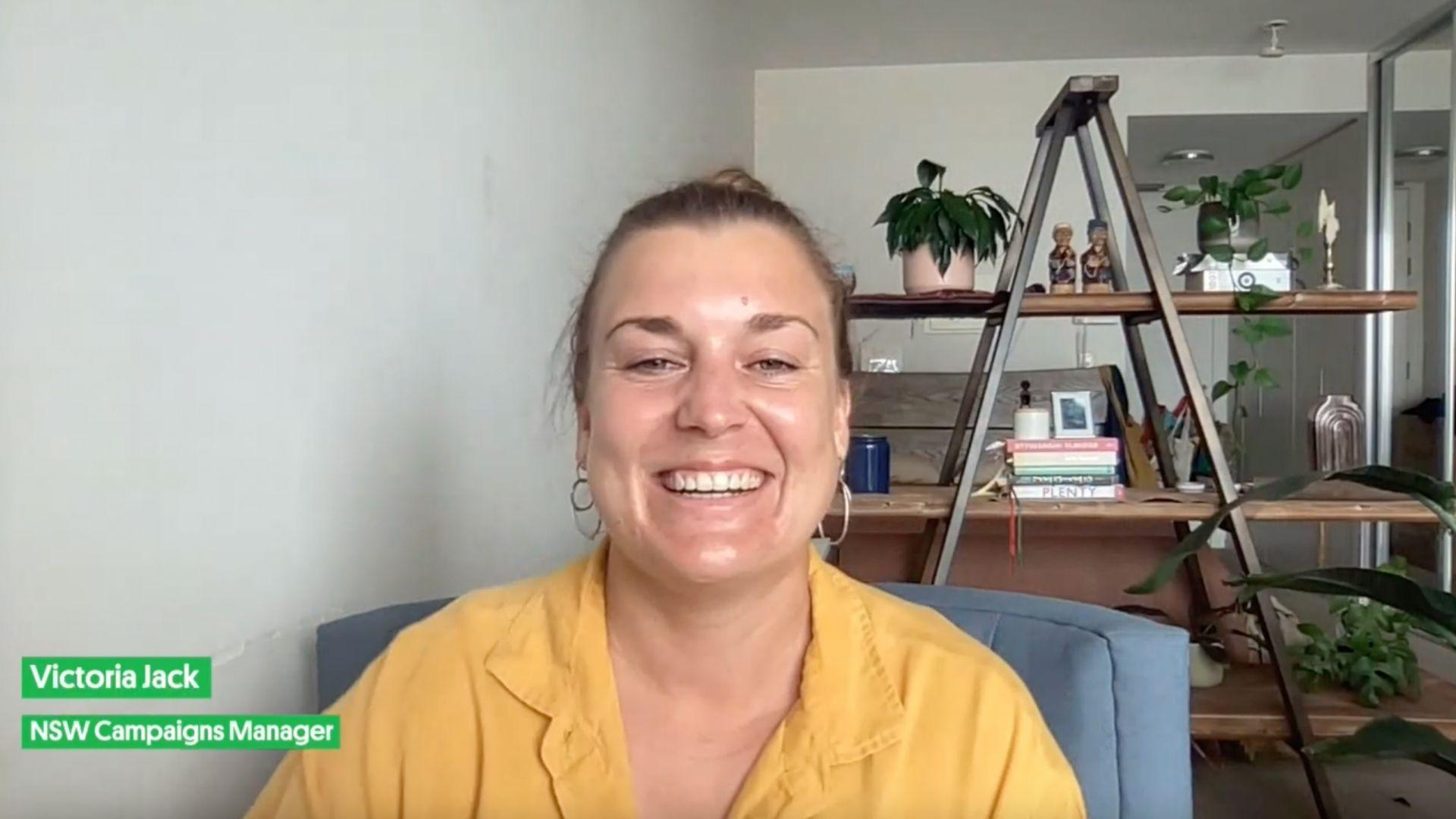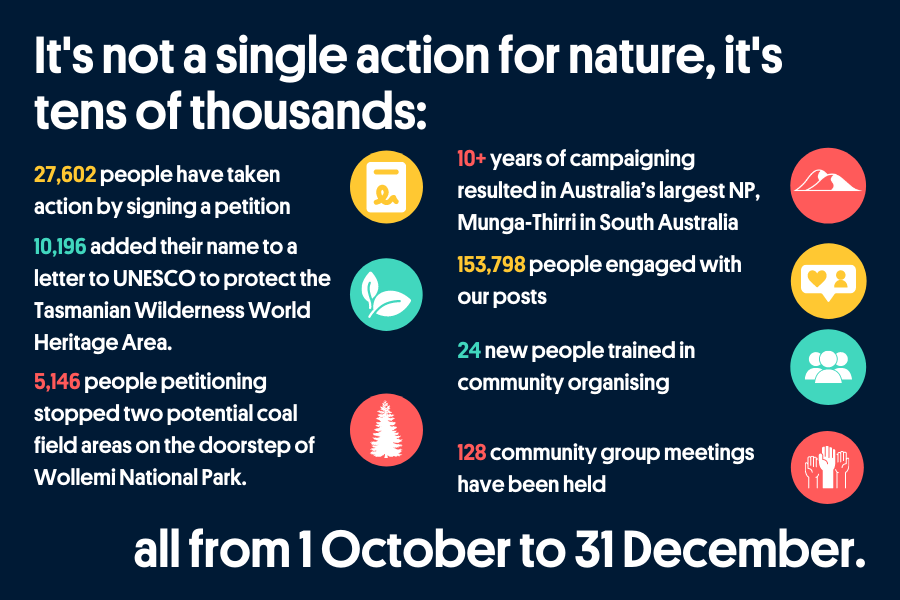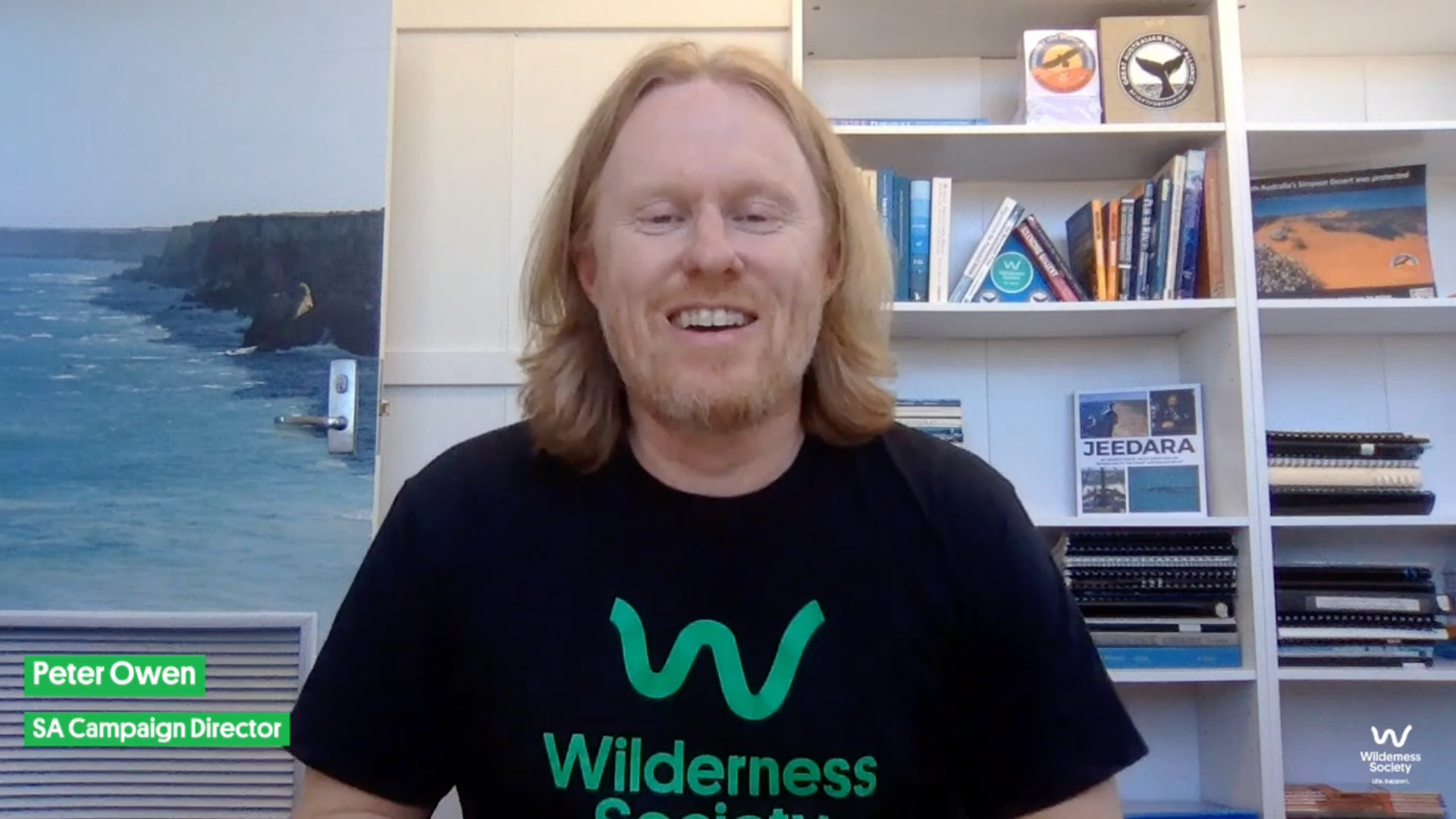Communities for nature
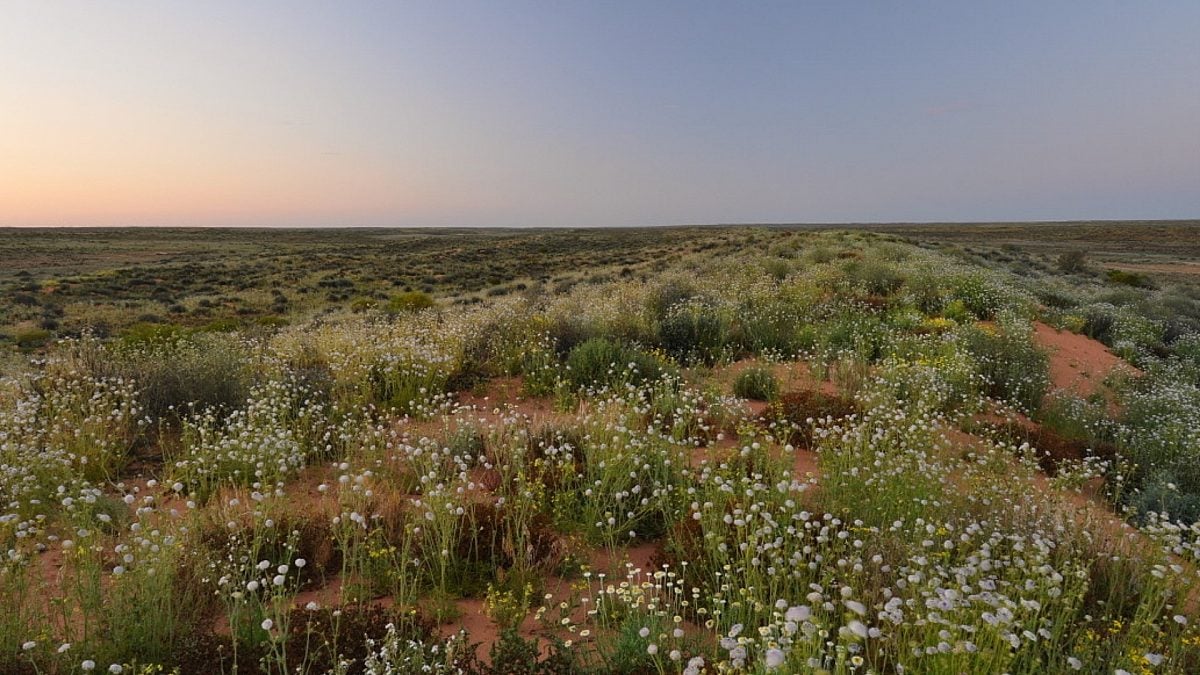
We've been busy!
With your support we've been making big strides in our campaigns across the country. Here are some highlights from from October to December 2021.
From stopping coal mining on the doorstep of Wollemi National Park to helping usher in the biggest national park ever created in Australia in Munga-Thirri / Simpson Desert, thanks to your support it was a busy end to 2021!
Protecting Wollemi from coal
In December 2021, the NSW government announced that two areas next door to Wollemi National Park in the Blue Mountains World Heritage Area—Hawkins and Rumker—are safe from coal exploration. Without support from people like you, this win wouldn’t have been possible. But the fight to stop a new climate-killing coal mine on Wollemi’s doorstep isn’t over yet.
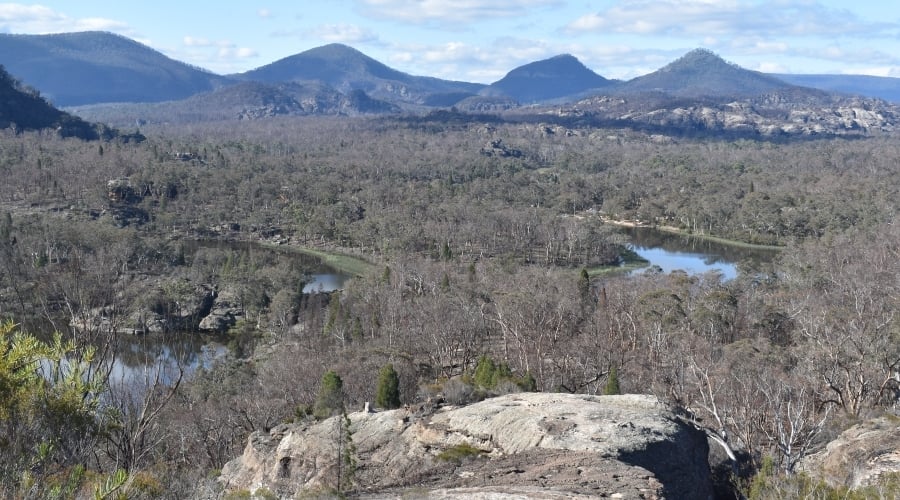
The NSW government has earmarked a third area on the edge of Wollemi—Ganguddy-Kelgoola—as a possible site for a new coalfield. The forest here is home to threatened species such as the critically endangered regent honeyeater, endangered glossy black cockatoo and endangered spotted-tailed quoll. There are at least 17 recorded First Nations cultural sites in Ganguddy-Kelgoola. Together, we can protect what’s at stake in this spectacular place by putting a stop to this dirty coal plan.
Our work in numbers
Munga-Thirri / Simpson Desert—Australia's biggest ever national park announced
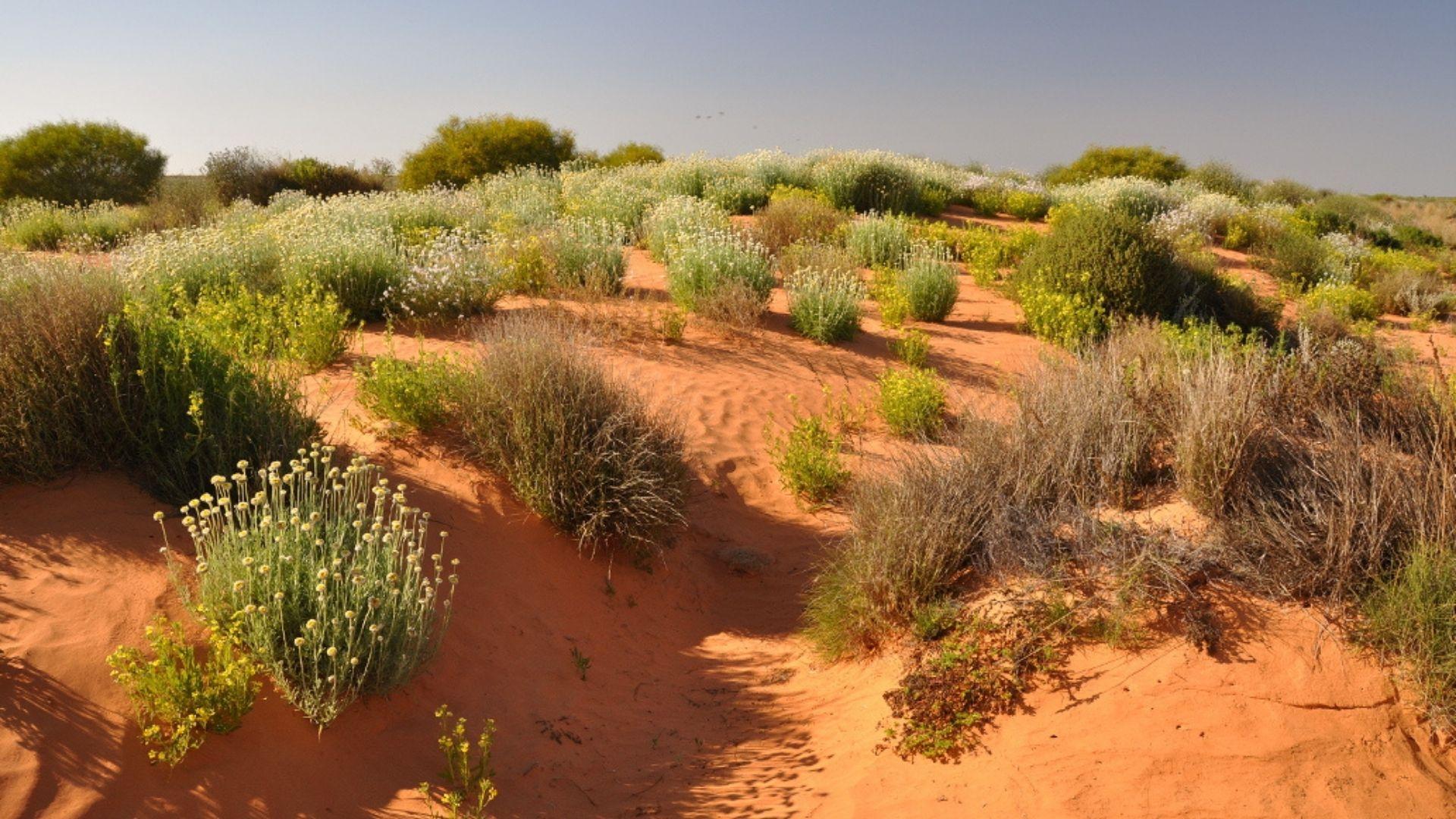
Thanks to your support for over a decade, we’ve helped deliver the biggest national park in Australia! The Munga-Thirri / Simpson Desert National Park will protect 3.6 million hectares of undamaged desert ecosystems and the species that call it home.
On 25 November 2021, the South Australian government proclaimed this park—nearly twice the size of Kakadu National Park. It is a significant step towards a huge conservation corridor in the heart of Australia, allowing endangered animals and plants to move and adapt to a rapidly changing climate.
But it isn’t over yet. There are still leases within the national park where fossil fuel companies can explore this wilderness area. The conservation of Munga-Thirri / Simpson Desert is not complete until bulldozers are no longer allowed to rip through the desert.
With you, we will continue to stop the mindless expansion of the fossil fuel industry that poses a direct threat to life as we know it.
Deforestation in Queensland
Queensland’s deforestation laws were strengthened in 2018 because of the support of tens of thousands of people—you helped to expose Queensland’s hidden deforestation. Backed by you, the Wilderness Society has:
Monitored deforestation and captured high-impact footage;
Secured stronger protection for over 1 million hectares of high conservation value regrowing forest and bushland and over 200,000 hectares of important regrowth along waterways in the Great Barrier Reef catchment;
Put an end to the most highly destructive clearing permits;
Seen through the establishment of the $500 million Land Restoration Fund; and
Supported community leaders to talk to people one-on-one in the lead up to the 2020 Queensland state election to raise awareness of the issue.
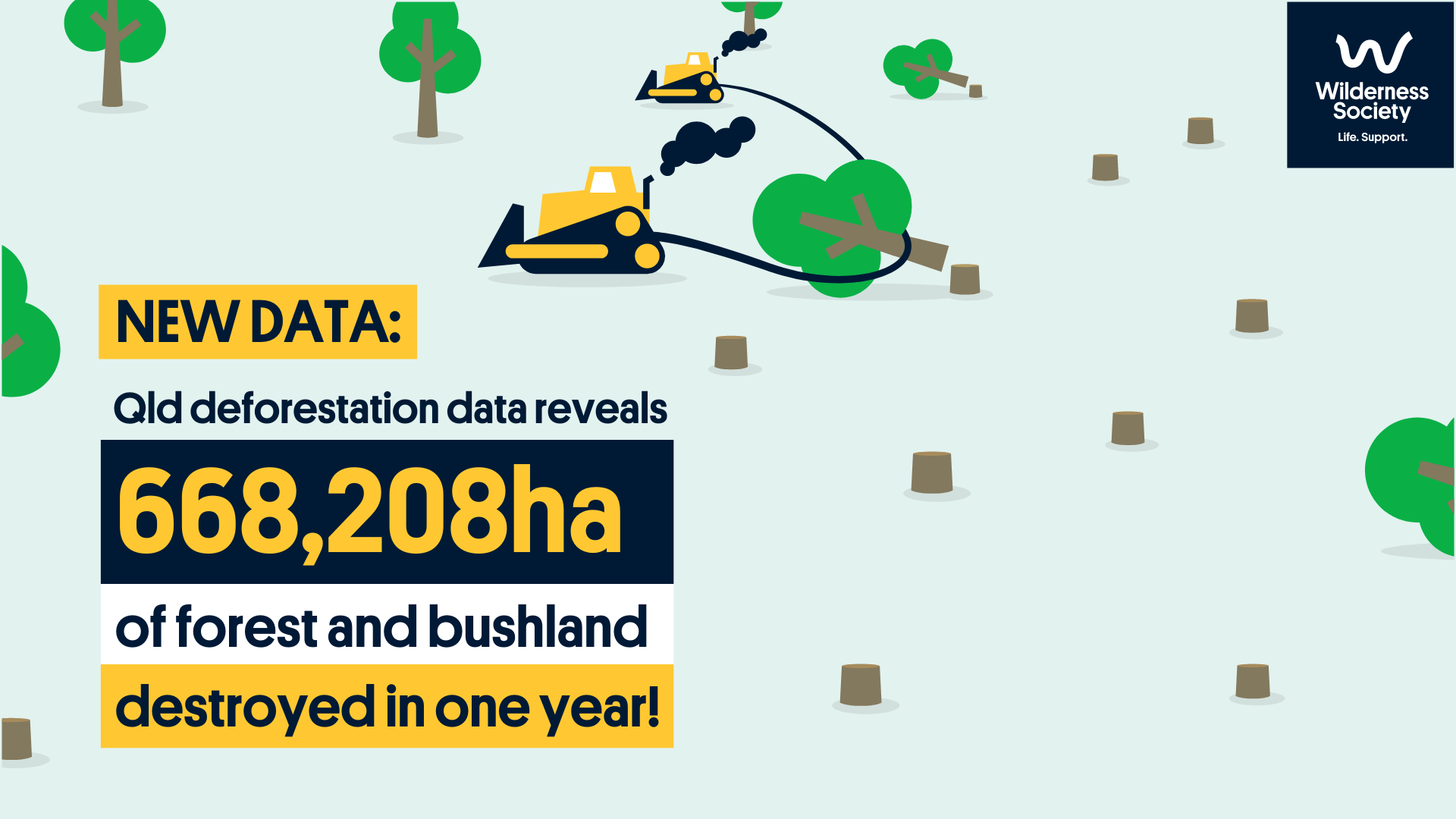
But, despite securing stronger legislation, loopholes remain in Queensland’s laws that are large enough to drive a bulldozer through.
Queensland’s 2018–2019 deforestation data (SLATS) was quietly released on 30 December when most people wouldn’t see it. Shockingly, over 668,000 hectares of forest and bushland was cleared in Queensland in a single year—that’s around a football stadium cleared every 91 seconds.
This continued destruction is devastating for the environment and wildlife. Tens of millions of native animals are killed annually by this scale of clearing. Sediments and chemicals run off cleared areas into waterways that flow out to the Great Barrier Reef—smothering this already struggling icon. Bulldozing trees worsens climate change—carbon dioxide is released into the atmosphere when the fallen trees are left to burn or rot.
And earlier this month, hundreds of you chipped in to put billboards in Brisbane's busiest thoroughfares to expose Queensland's hidden deforestation—they’ll be going up in February!
Because of your support, the Wilderness Society is now taking a deep dive into the data to determine the main drivers of the destruction. And we are finding ways to communicate this hidden problem to hundreds of thousands of Queenslanders.
The King Island community is clear: no new oil and gas exploration

Last year, the small community of King Island in the Bass Strait to the north of lutruwita / Tasmania’s main island became the latest casualties of the mindless expansion of oil and gas giants into our oceans.
First the Morrison government released new frontier exploration acreage on their doorstep, against the King Island Council’s wishes. Then the government granted approval for US behemoth ConocoPhillips and Beach Energy to seismic blast the marine ecosystem and fisheries surrounding the island.
With your support, the Wilderness Society engaged independent research company EMRS to survey every household on King Island. Incredibly, more than half of all resident adults responded.
The results, which we recently released and were reported on in The Australian, were staggering.
96% opposed seismic blasting and 94% of King Islanders were opposed to any oil and gas exploration in the ocean surrounding them.
93% of respondents felt they should “definitely” have had a say in decisions about seismic blasting their marine backyard and 77% felt that they had had no say at all in the decision-making process.
We’ve shown categorically that ConocoPhillips has no social licence in this part of the world, as we continue to oppose this disastrous oil and gas proposal in the sensitive marine environment of the Bass Strait.
Connecting With Giants
Projects are taking shape across the Emerald Link proposal for East Gippsland, Victoria, that will help the restoration, protection and appreciation of Australia's last unbroken forest wilderness connecting alps to the rugged coastline. It's all thanks to your support, which means a world-class conservation-based tourism economy for local communities is within reach.
One such project, the Connecting With Giants walk, is being championed by Emerald Link advocate Birgit Schaedler. In recent months she has been hard at work developing a Conservation Proposal for the walk, engaging communities across the Errinundra region, as well as local groups like the Friends of Errinundra, alongside Emerald Link partners the Goongerah Environment Centre Office.
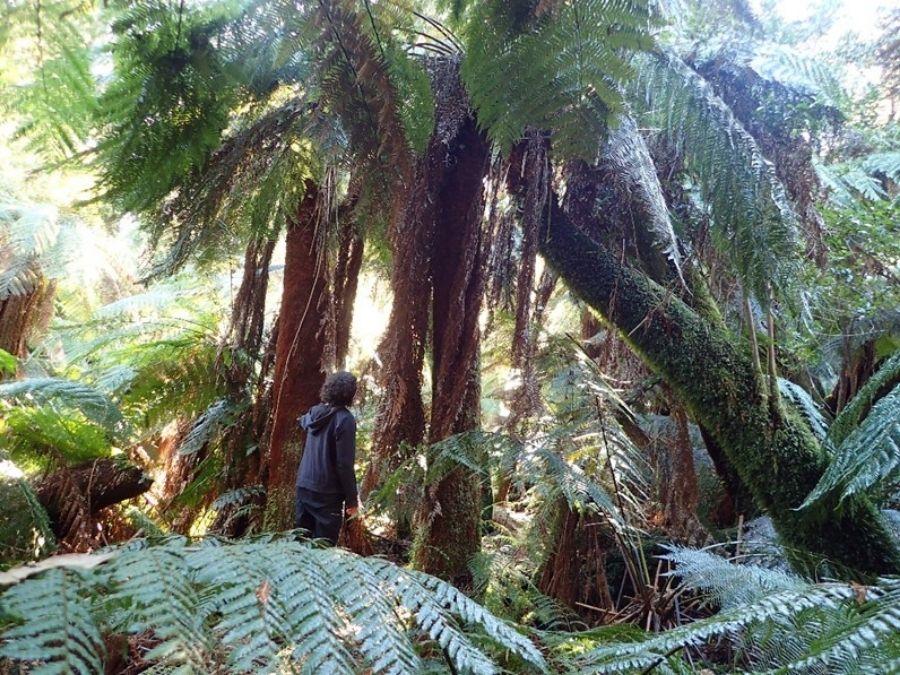
Situated on East Gippsland’s Errinundra Plateau, the Connecting With Giants walk will join two existing trails through spectacular old-growth forest. The area has unique conservation values, with giant trees along the walk having an average trunk circumference of 10 metres. Radiocarbon dating has shown these giants to be between 550 and 600 years old. The walk meanders through several different forest types, from higher altitude dry forests to wet forest and lush rainforest. It’s all home to many threatened species of bird, including the powerful owl, sooty owl and square-tailed kite. Some of the hollow-dependent marsupials that call this area home, like greater gliders and yellow-bellied gliders, are among the prey species for the large forest owls.
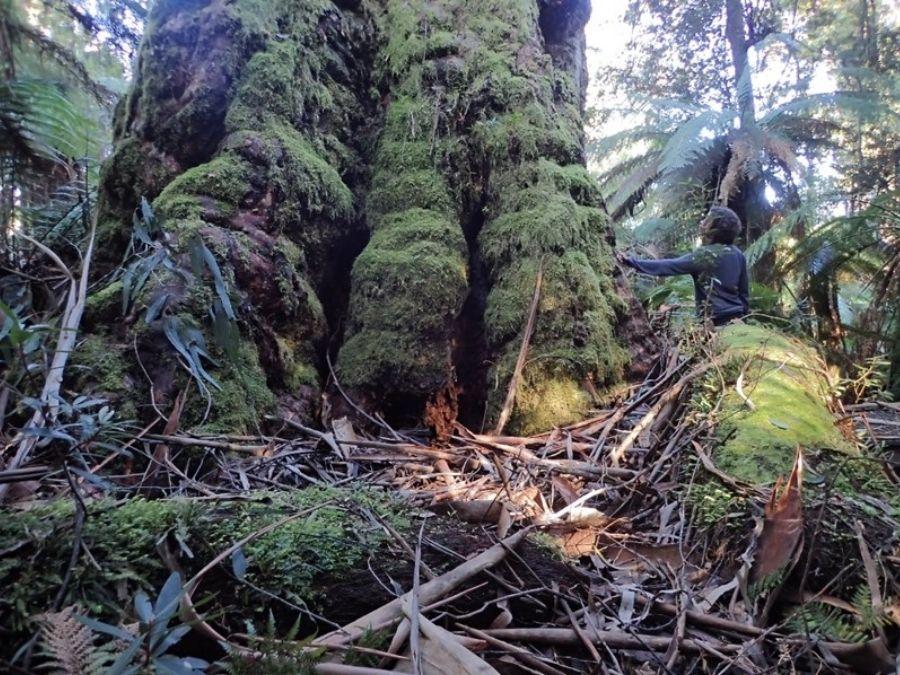
“The people of Errinundra love this landscape so much they want to share it with others, with people who are able to respect it,” says Birgit. “They want to save these forests and the best way to do that is to open them up in a respectful way. What’s left after the 2019-2020 fires is so precious; the Connecting With Giants walk is crucial for recovery of these forests as well as the local economy after the megafires. The Friends Of Errinundra are doing what they can to help rangers keep walks open and repaired already—the passion is already there to make the Connecting With Giants walk happen.”
However, Birgit is just as excited about a recent sighting in the area: “We had a very rare encounter recently at Tubbut: a koala!” she says. “Koala populations in the Errinundra to Snowy area are super-rare, despite colonies having been around in the past. The Emerald Link would very much help to ensure that threatened species are assured habitat and protection to again flourish in the future.”
You love the ocean!
We recently asked you what you love so much about the ocean. Here are some of your best responses.



